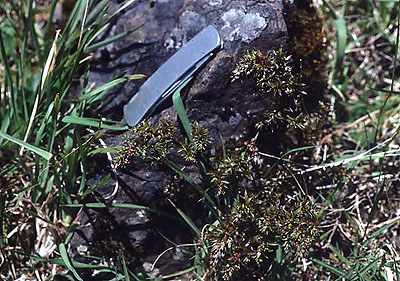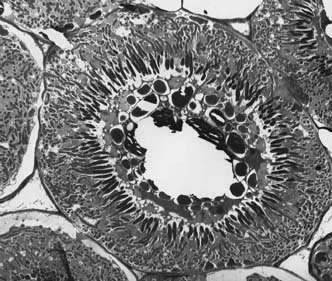
Coriaria plumosa on Mr. Cook, New Zealand. (D. Benson)

Coriaria arborea vesicle cluster (TEM, New Zealand) (D. Benson)
Plant Link - Coriariaceae
Frankia strains that infect Coriaria are closely related to the Cluster 2 strains that associate with Ceanothus, Datisca, and members of the actinorhizal Rosaceae (Benson and Clawson, 2000). The richness of strains is apparently low in the Rosaceae, Datiscaceae and Coriariaceae. For example, a survey of 16S rRNA gene sequences from Coriaria arborea nodules in New Zealand reported only two 16S rRNA gene sequences that differed by a single nucleotide, from twelve nodules collected at distant locales on the North Island (Clawson, et al., 1997). Additional sequences from a total of 30 nodules from C. arborea and four more from C. plumosa collected in New Zealand yielded the same sequences (DRB, unpublished).
Similarly, a collection of short 16S rDNA sequences spanning another 16S region (V6) PCR-amplified from Coriaria nodules collected in New Zealand, France, and Mexico had only one mismatch in 274 bp analyzed (Nick, et al., 1992). A study in Pakistan using a different 16S rRNA gene region found some diversity in both Coriaria nepalensis and Datisca cannabina that would have been missed using the region analyzed by Nick et al. (Nick, et al., 1992). Nevertheless, the number of differences among the sequences was still low. No studies have been done to date on the distribution of these strains in soils from areas that lack Coriaria spp., so their ubiquity remains unknown.